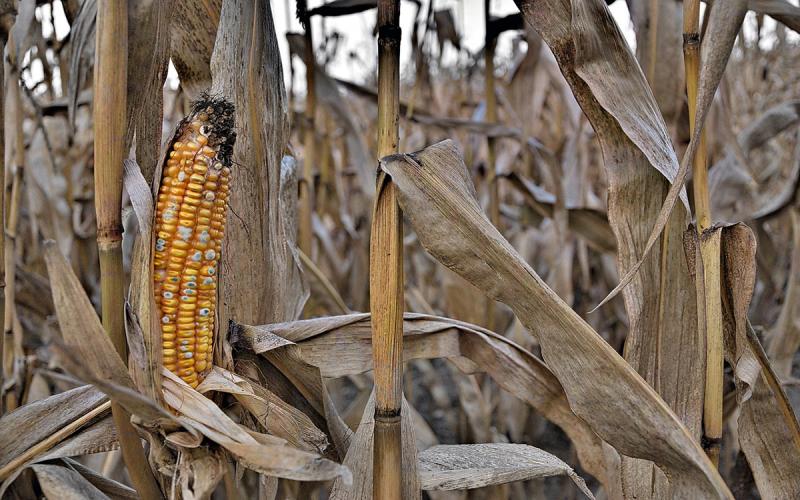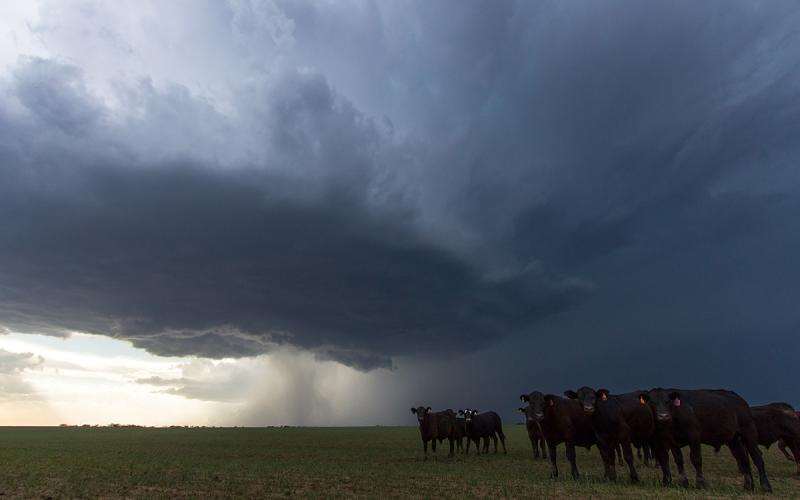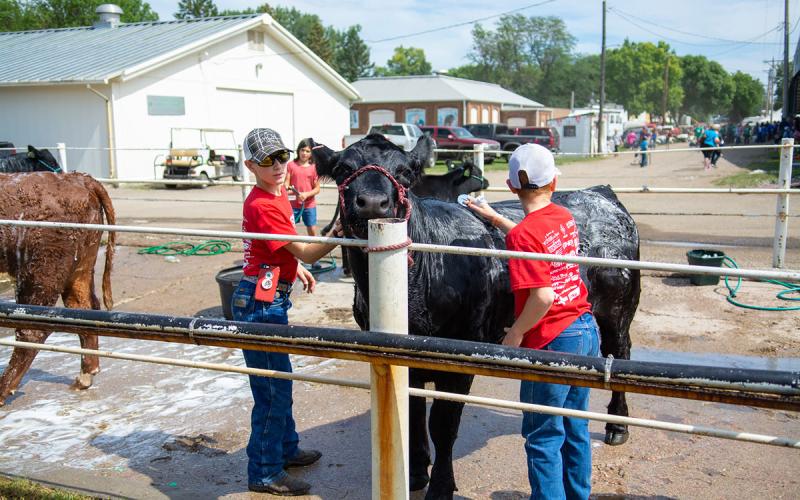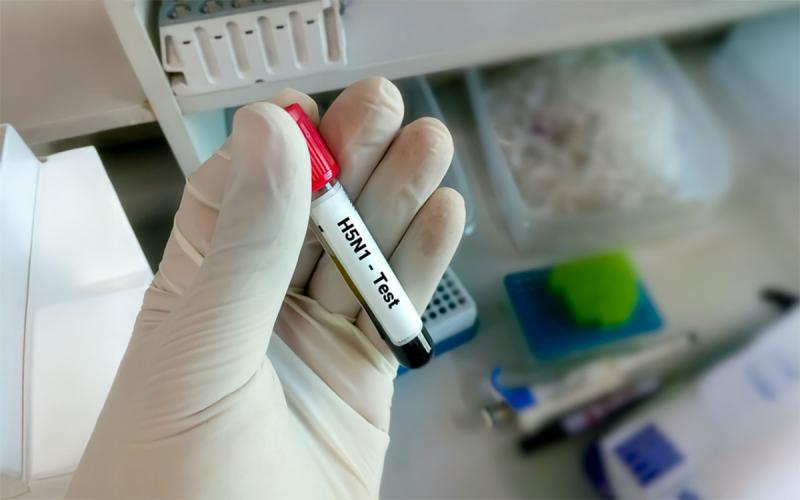
Written collaboratively by Russ Daly, Hilary Ward, Keith Koistinen, and Nathan Wilen.
Veterinarians and laboratory diagnosticians are fielding reports of death losses in cat populations linked to avian influenza infections.
Beginning in 2022, an H5N1 subtype of highly pathogenic avian influenza (abbreviated as HPAI) virus caused death losses in domestic turkeys and chickens in South Dakota and elsewhere in the United States, an outbreak that continues. The HPAI virus causes respiratory and multiple organ failure in affected birds, typically appearing as increased numbers of dead birds in large commercial operations, as well as smaller backyard flocks. Deaths in wild birds, typically migrating waterfowl but also other bird species, have been observed at the same time, as well as spillover of the virus into mammals, such as raccoons, foxes, skunks, and other species.
In Spring 2024, the HPAI virus began infecting dairy cows, causing drops in milk production and other signs of illness. Unlike infections in other species, widespread death losses have not been associated with HPAI infections in dairy cows.
About the same time as its emergence in dairy cows, the HPAI virus was implicated in deaths of domestic cats in the vicinity of affected farms. Most affected cats showed neurologic signs, such as tremors or seizures, for a short period of time before dying.
Since that time, three cases of substantial death losses in groups of outdoor domestic cats in South Dakota have been described. In each of these cases, there has been no apparent link to dairy cows, other livestock, or domestic poultry.
Cases in South Dakota
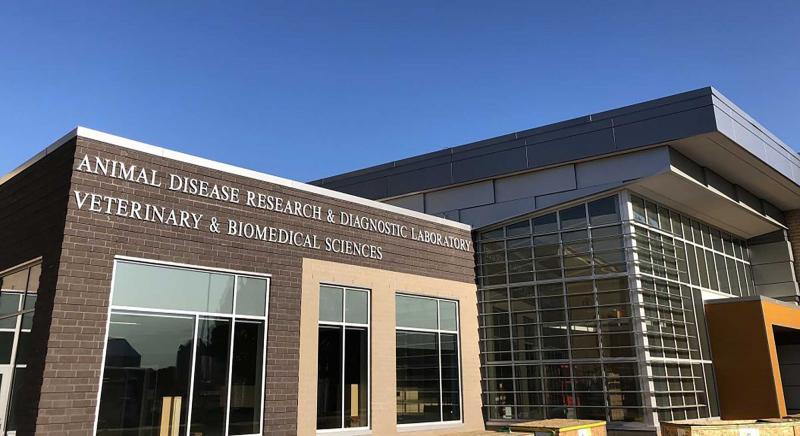
Campbell County
In April 2024, a resident of Campbell County reported the death of ten out of a group of approximately 20 “barn” cats in an outbuilding on their farm. Prior to death, the cats showed a lack of appetite, lethargy, and weakness. Two of the cats were sent to the veterinary diagnostic laboratory at North Dakota State University, where the HPAI virus was identified in lung samples. Pathologists observed damage in the lungs, liver, and brain of the two cats.
The farm did not house livestock or domestic poultry. The location is near wetlands frequented by wild birds. In the days prior to the first deaths, the resident noted a dead bird carcass (possibly a duck or goose) apparently brought into the outbuilding by one of the cats. Three cats that were confined to the resident’s house were unaffected.
Lake County
In late December 2024, two separate cases of cat death losses were investigated by the SDSU Animal Disease Research and Diagnostic Laboratory (abbreviated as ADRDL). A Lake County resident reported the death of at least ten cats and one raccoon over a period of four weeks on their rural property. Most cats appeared healthy right up until the time they were found dead. One of the deceased cats was sent for diagnostic testing, with the HPAI virus found in the brain and lungs. This strain of HPAI was similar to viruses circulating in wild birds and poultry, but not to viruses implicated in dairy cow illnesses. Organs affected in this cat included the kidneys and other organs in addition to the brain and lungs. This farm also did not house livestock or domestic poultry, but was within a mile of a wetlands frequented by ducks and geese and adjacent to a shelter belt, providing the cats opportunity for hunting wild birds and small mammals. No raw pet food or milk was fed to these cats.
Brookings County
At about the same time, a Brookings County resident reported deaths of five out of a group of ten farm cats on their rural property. Prior to death, cats were observed to be “twitchy” and quite lethargic. Here, as with the other farms, cats were fed commercial dry food; this resident would frequently observe small birds in the cats’ food dish. This farm co-housed a backyard flock of 25 chickens. One chicken was found dead about the time of the cat deaths, but there was some evidence of trauma as a cause of death; no disease testing was possible. Deaths in the cats occurred over a short (a few days) time period.
Laboratory findings on the two cats submitted to the ADRDL revealed the presence of the HPAI virus in a respiratory sample, as well as damage to the lungs, brain, and liver. The pneumonia in this case, as well as in the other two cases, featured lung infection with secondary bacteria that contributed to the respiratory tract damage.
Besides these three documented diagnoses, the ADRDL continues to investigate other similar cases, with results pending.
For Cat Owners
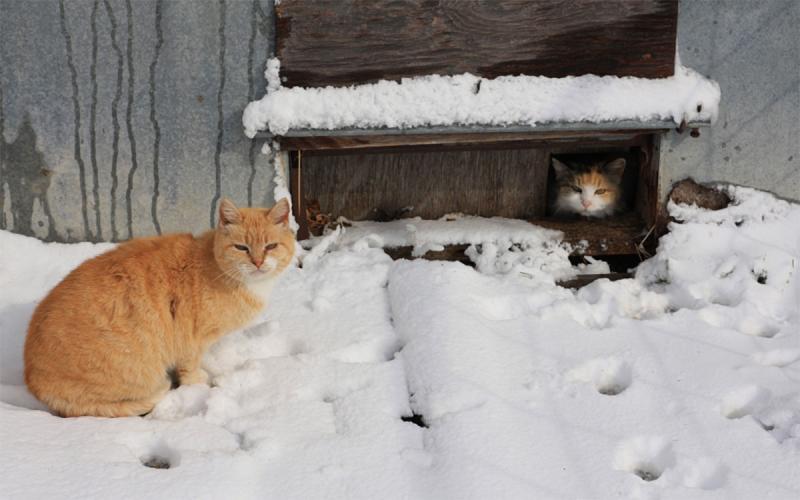
While other cases of HPAI cat deaths across the United States have involved contact with sick dairy cattle or domestic poultry, these instances illustrate that does not have to be the case. Presumably, cats have become exposed to the HPAI virus through contact with infected or dead wild birds, or areas in which they have been present. Cats are particularly severely affected by HPAI, in contrast to some other animal species.
Most instances of cat deaths have been simply that – cats are observed dead without prior signs of illness. When signs are present, they are often related to the nervous system: incoordination, tremors and twitchiness, or seizures. Caretakers should remember that rabies is ever-present in South Dakota as well, and can cause many of the same signs. As a result, people should exercise extreme caution around cats with these clinical signs, avoiding contact with the animals as much as possible.
Human cases of HPAI have resulted from contact with infected dairy cows and poultry. While such infections have not yet been implicated from contact with HPAI-infected cats, people should take precautions when dealing with symptomatic or dead cats. Wear gloves when handling sick or dead cats, as well as an outer layer of clothing (e.g., coat) that can be properly washed after use. Overshoes should be worn when entering buildings or other areas where these cats have been, and cleaned and disinfected afterwards.
Any suspicious animal deaths or illnesses should be promptly reported to a veterinarian.
Information for Veterinarians
Consider submitting feline cases suspicious of HPAI to the Animal Disease Research and Diagnostic Laboratory. The preferred diagnostic submission is a whole body whenever possible. If not, a complete set of postmortem tissues – especially brain, lung, and nasal swabs – should be submitted. If neurologic signs have been reported, rabies testing should be requested. Rabies testing requires both halves of the brain to be submitted fresh; sending the whole body or head will suffice. Currently, no convenient nor consistently useful antemortem sampling methods have been described.
Effective treatment of affected cats has not been described, although secondary bacterial pneumonia appears to contribute to the severity of illness. Caution should be taken when working with suspect cases, both in terms of the possibility of rabies in cats showing neurologic signs and in terms of potential exposure of veterinarians and staff to HPAI; PPE including gloves, face masks, and eye protection should be used.
